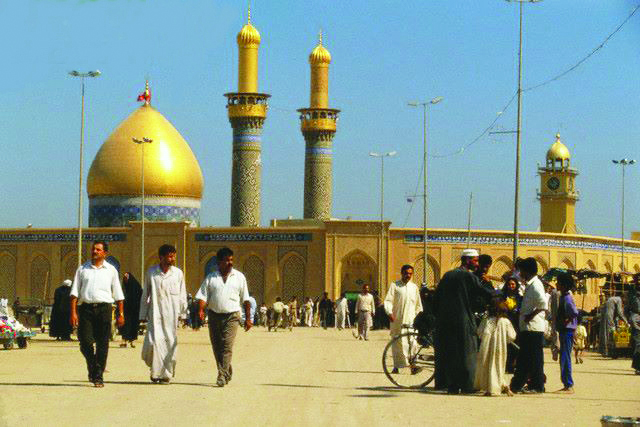A further new wave of migration of people from the countryside and neighbouring villages and also from other Iraqi towns occurred during the Iran- Iraq war in 1980, thus raising the population of the city of Karbala in 1985 to 184,574.
While the population of city of Karbala was reported in the annual bulletin of the Province of Karbala in 1971 to be 102,213 1. Thus, the overall per cent increase in 14 years is about 81%. On the other hand, widening of some of the city streets such as Bah al-Qibla (also known as A hit al-Fahad) (see plate no. 7), al-Sidra, al-Jumhouria and opening new streets such as Bab al-Sullania and al-Muheet (Ring Road) has resulted in the demolition of residential areas. Thus, the size of the city of Karbala was no longer big enough to accommodate the increasing number of inhabitants and also there was no room to build further new housing schemes within it. Therefore, the city once again expanded horizontally outside both its old and new boundaries in order to meet these additional requirements, especially in the western, southern and south western direction and new quarters were setup. These were:
- AI-Intisar and al-Bahadihya quarters, built in 1980.
- Both sectors of al-Avkari quarter (one inside al-Hur area and the other behind al-Laqa area), built in 1980 and 1983.
- Al-Dhubbat and al-Slnihadaquarters, built in 1983.
- Al-Salam quarter, built in 1989.
-AI-Sumoud quarter, built in 1990.
-AI-Tahaddi and Taawin quarters, built in 1992.
Most of quarters built in Karbala lacked the essential services such as health, public transport, council services, markets, schools, social services, and mosques.
The buildings in these new quarters are different from those in the old city in that they were built in a modem architectural style. The builders were overzealous in imitating the modem style vvithout due consideration to the original styles and the architectural environment of the city. This lack of vision was responsible for the loss of some of the architectural features in these quarters.
Source:
- Holy Shrines of Karbala: By Raouf Mohamed Ali Al-Ansari
[p 107-111].

